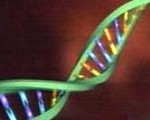Environmental Factors Affect the Heritability of Obesity
Thursday, February 5, 2015 To anyone, who understands genetics, this heading is simply common sense.
To anyone, who understands genetics, this heading is simply common sense.
Unfortunately, most people have rather simplistic views of genetics – either you have a gene for disease X and you get it, or you don’t have the gene for disease X and so you’re safe.
In reality, this is not at all how genetics works (with the few rare exceptions of single-gene disorders – and even there is not at all as straightforward as most people imagine).
In fact, whether or not a gene (or group of genes) actually results in a specific phenotype is highly dependent on the environment.
As a simple example: I could be genetically highly predisposed to salt-sensitivity (i.e. having a blood pressure increase on a high-salt diet) – but unless I am actually exposed to a high-salt diet, I can go my entire life without ever developing high blood pressure.
This is pretty much the case for all complex (and even some single-gene) disorders – it is only when you put the susceptible “disease gene(s)” in the wrong environment, that the gene does what it does. This is why most “nature vs. nurture” debates lead nowhere – it is virtually never one OR the other – it is mostly BOTH!
A good example of how changing environments may be important when studying the genetics of diseases is suggested in a new study by James Niel Rosenquist and colleagues, published in the PNAS.
The researchers examines the association between the FTO gene and BMI using longitudinal data from the Framingham Heart Study collected over 30 y from a geographically relatively localized sample in the US.
What they found was that the well-documented association between the rs993609 variant of the FTO (fat mass and obesity associated) gene and body mass index (BMI) varies substantially across birth cohorts, time period, and the lifecycle, with a apparently increasing impact of this gene for those born after 1942.
As the authors point out,
“Such cohort and period effects integrate many potential environmental factors, and this gene-by-environment analysis examines interactions with both time-varying contemporaneous and historical environmental influences.”
Thus,
“These results suggest genetic influences on complex traits like obesity can vary over time, presumably because of global environmental changes that modify allelic penetrance.”
In other words, as the environment changes, certain genetic “phenotypes” may become more (or less) common.
It is however important to remember in this context that the term “environment” is rather broad and may include biological drivers that include changes in the epigenome, bacteriome or even virome, all of which will have substantially changed over time (and continue to change as we we speak).
On a more practical level, this is also why genetic testing for complex genetic diseases (and so-called “personalized” medicine) will likely be nothing more than a pipe dream and a money grab, at least for the foreseeable future.
@DrSharma
Edmonton, AB
![]() Rosenquist JN, Lehrer SF, O’Malley AJ, Zaslavsky AM, Smoller JW, & Christakis NA (2015). Cohort of birth modifies the association between FTO genotype and BMI. Proceedings of the National Academy of Sciences of the United States of America, 112 (2), 354-9 PMID: 25548176
Rosenquist JN, Lehrer SF, O’Malley AJ, Zaslavsky AM, Smoller JW, & Christakis NA (2015). Cohort of birth modifies the association between FTO genotype and BMI. Proceedings of the National Academy of Sciences of the United States of America, 112 (2), 354-9 PMID: 25548176
.


